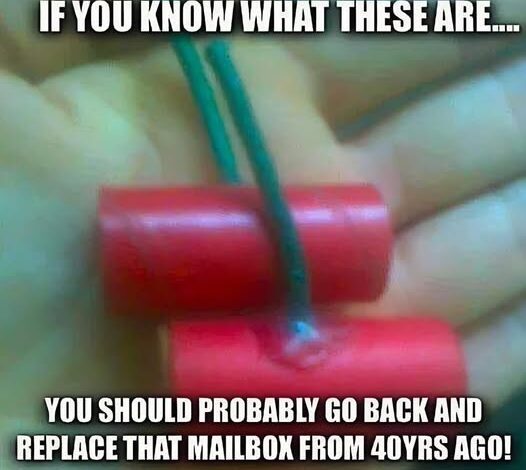Unmasking the Myths: The Truth About America’s Most Powerful Firecracker

The Explosive History and Legacy of M-80s
M-80 explosives, commonly referred to as “M-80s,” are some of the most famous firecrackers in American culture. Renowned for their intense sound, these fireworks have a fascinating origin tied to military purposes. Over the years, they have moved into the public sphere as civilian fireworks, but their power has led to widespread myths, strict legal scrutiny, and significant safety concerns. Here’s a closer look at the story of M-80s, from their creation to their status today.
Defining M-80s
M-80s are large firecrackers with a loud bang and a rich history. Originally developed in the mid-20th century for the U.S. military, they were designed to replicate the sounds of combat for training exercises. The designation “M-80” is rooted in military terminology, with “M” symbolizing standard equipment and “80” indicating the initial flash powder quantity of around 80 grains (5.2 grams).
Eventually, these explosives transitioned to the consumer fireworks market in a modified form. The consumer-grade versions typically include a small red cardboard cylinder containing about 45 grains (3 grams) of flash powder, ignited by a cannon or Visco fuse. Their intense noise and compact design have made them a favorite among firework enthusiasts.
How M-80s Differ from Regular Firecrackers
The defining feature of M-80s is their sheer explosive power. Unlike ordinary firecrackers, which rely on black powder, M-80s use flash powder—a more volatile compound that creates a louder, sharper detonation. This distinctive attribute classifies them as “salutes,” pyrotechnic devices focused on sound rather than visual effects.
The Legal Complexities of M-80s
The legality of M-80s varies widely depending on location. Their high flash powder content has led to stringent regulations aimed at mitigating risks to public safety.
Regulations in Canada
In Canada, M-80s are strictly prohibited. Their production, transportation, storage, import, and possession are all illegal due to their classification as hazardous materials capable of causing significant damage or injury.
Regulations in the United States
In the U.S., rules surrounding M-80s have evolved since the 1960s. The Federal Hazardous Substances Labeling Act of 1966, later reinforced by the Child Protection Act, imposed limits on the amount of explosive material permitted in consumer fireworks. By 1975, federal regulations capped the flash powder content of consumer-grade fireworks at 50 milligrams—much less than the 5.2 grams found in the original M-80s.
As a result, traditional M-80s are no longer available to the general public. Only licensed professionals can legally possess or use them. Smaller firecrackers containing up to 50 milligrams of flash powder are still accessible to consumers, though they are significantly less powerful. Despite their reduced strength, these smaller devices still pose risks if mishandled.
Licensing for M-80 Use
Individuals with a federal explosives license from the Bureau of Alcohol, Tobacco, Firearms and Explosives (ATF) can legally acquire M-80s for specific purposes, such as agricultural use. Farmers often deploy them to protect crops from wildlife, relying on the loud sound rather than explosive force.
Identifying Fake M-80s
Due to strict regulations, many imitation M-80s have emerged on the market. These counterfeits often replicate the appearance of genuine M-80s, complete with red cardboard tubes, but typically contain far less flash powder—usually between 30 and 50 milligrams. To make them appear larger, manufacturers sometimes add filler materials like plaster, reducing their actual potency.
Authentic M-80s are compact and densely packed with flash powder, featuring paper end caps. In contrast, imitations often have protruding fuses or alternate placements that reveal their lack of authenticity.
Debunking Myths: Are M-80s as Powerful as Dynamite?
A widespread misconception is that M-80s are equivalent to dynamite or represent a “quarter stick of dynamite.” This claim is false. While M-80s contain a considerable amount of flash powder, dynamite is a high explosive made from nitroglycerin, which is exponentially more powerful. M-80s are categorized as low explosives, meaning their impact, while dangerous, falls far short of dynamite’s destructive capabilities.
The Hazards of M-80s
M-80s carry significant risks, especially when used irresponsibly. Their high flash powder content can cause severe injuries, including burns, hearing loss, and even amputation. These dangers are why their sale, possession, and use are heavily regulated, and why they are primarily reserved for professionals with the appropriate training.
Even legal consumer-grade firecrackers can be hazardous. Reckless usage, such as igniting multiple firecrackers at once or attempting modifications, greatly increases the likelihood of accidents. Adhering to fireworks safety guidelines is essential to prevent such incidents.
Conclusion: The Lasting Impact of M-80s
From their beginnings as military tools to their status as restricted fireworks, M-80s have left a lasting impression on both pyrotechnic enthusiasts and regulators. Despite being less accessible today, they remain a symbol of the balance between entertainment and safety in fireworks. Whether viewed as a piece of history or a reminder of their potential dangers, M-80s continue to fascinate and caution fireworks lovers alike.